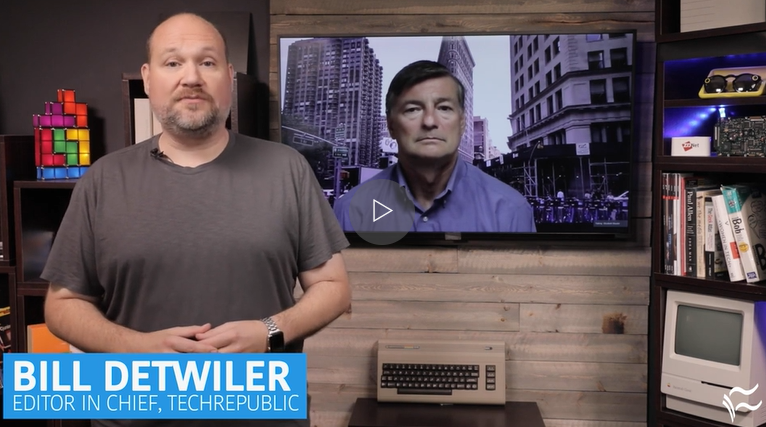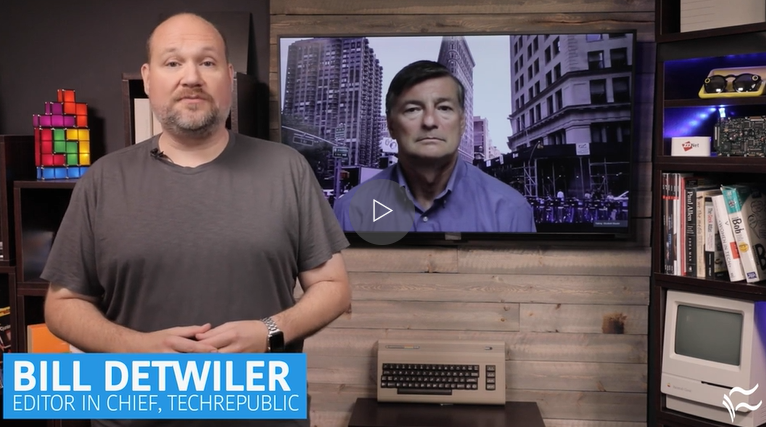

The foldable future: How Microsoft hopes to define a new hardware category with the Surface Neo and Duo
Microsoft's Windows-based Surface Neo and Android-based Surface Duo are the epitome of dual-screen foldable devices. They will redefine the laptop, tablet and mobile phone markets.

At this week's Surface event, Microsoft announced plans to update existing Surface products (Surface Laptop 3 and Surface Pro 7), a new tablet (Surface Pro X), and two foldable devices (Surface Neo and Surface Duo). ), which won’t be released until the 2020 holiday season. I spoke with ZDNet's Editor-in-Chief Larry Dignan about Microsoft's Surface announcement, and where they're going in the future. The following is an edited transcript of the interview.
Bill Detweiler: Larry, let's get started. What do you think of updates to existing Surface products?
Larry Dignan: I think these updates are pretty solid. I mean, I think the most important thing for IT shops is that they make them more useful, meaning you can take them apart and upgrade the memory and things like that. It sounds like a very basic thing, but it can mean a lot to a business.
But what really got me going was at the end, where Microsoft fully unleashed the Osborne Effect and outlined some of the products it will launch during the 2020 holiday season. They're basically showing off something that's over a year away.
Microsoft's Surface Neo and Surface Duo can fold
Bill Detweiler: Yes, you're talking about Surface Duo and Surface Neo. These dual-screen, foldable devices appear to be a cross between a phone and a PC.
Larry Dignan: Yeah, I mean the Surface Neo is a dual screen, it has a really cool magnetic keyboard and it folds up. That one looks useful, it basically combines a tablet and a laptop and all those things. It will run on Windows 10X, the next generation of Windows.
What really got me excited was the Duo they released, which is a small-screen version of the Neo, but it runs on Android, and the device is a phone. What's interesting, however, is that Microsoft executives are basically saying, "Yes, some of the claims about an Android phone being leaked are correct. We know you're going to talk about it as a phone, but we want you to Think further.”
When it's shown in a real-world setting, it's hard to tell what it actually is. It's a little bit like a tablet, a little bit like a phone, but it's a little bigger. But what I like about it from a dual-screen perspective is that it has a hinge. So it's not like the Galaxy Fold where it has to be bent the right way and so on. To me it seems like a more reliable option.
Bill Detweiler: It also has a 360-degree hinge. It allows you to prop up the device if you want to watch videos in landscape mode, so you don't have to always be in portrait mode. Like you said, it also seems to be sturdier and less prone to the kind of hardware glitches seen at the Galaxy Fold announcement. Currently, the re-released version has just come out.
Larry Diegman: Yeah, the other thing that resonates with me is that it runs on Android and has all the apps from the Play Store. Because all I know is that in the Microsoft space a lot of people are running Android. It turns out that Android is the best Microsoft phone system they can have. What's interesting is that they released this a year early because they wanted developers to build apps on it and come up with new use cases and so on. But I prefer the idea of Microsoft and Google collaborating on devices because it could provide a meaningful bridge.
Now it will all come down to product specs. At the end of the day, you're still going to want a good camera and all that stuff. This feels like a new category, but it's definitely not a collapsible category. I wouldn’t call the Galaxy Fold a smartphone, it kind of is, but it’s not yet. These two Surface phones seem to take this trend even further.
Microsoft wants Surface devices to support users' "flow" from screen to screen and app to app
Bill Detwiler: This is something you and I discussed before. As business professionals, we look for the sweet spot between tablets, PCs, laptops and mobile phones, a device that can potentially be used in all situations. We use DeX on a Samsung device and an iPad on an Apple device and are already halfway there. Like you said, for me, as someone who's been working in hardware for 20 years, it's a different feeling.
Larry Diegman: Yeah, another interesting thing that Microsoft talks about is they talk about "flow" a lot. Think about it, we all have tons of devices and we're changing, like you know, we're uploading data or text somewhere. We're basically always uploading something or there's always some distraction that takes us away from what we're trying to accomplish. So the design of this dual-screen device allows you to maintain that flow and keep you working, which is attractive to me.
I don't know if this software can live up to that standard. But I think "flow" is an issue that software and hardware manufacturers need to address. Because frankly, we have too many screens, too many distractions, too many things. So, I think that makes sense.
Bill Detweiler: Yeah, speaking of software, I think that's very important. Have you seen anything that would make people abandon the Microsoft ecosystem? If you haven't used Office, haven't used One Note, or haven't used PowerPoint, and if you've made the switch or your business has switched to Google apps, Android devices, Apple devices, here's what you can do to make the switch Is it going back to the way it was? Or is it really still for people who are already in the Microsoft ecosystem?
Larry Digman: I don't think anyone falls into one camp or another. So I often use G Suite and Office. I don’t think this is an either/or era. You can use G Suite in your life and office in your work. Or gradually you are more inclined to use Office in life and G Suite at work. Anyway, I think the basis of these things coexisting is which one is more efficient, no?
For example, if you are making a company presentation, you may use ppt, which is unavoidable. You know, Word, shared Google Docs or both together, it's a different game and you can definitely have it both ways. So you look at these tools, and they're all pretty good, but you're still picking the one that might make more sense to you.
I think that's what's interesting about Microsoft's (Surface) dual-screen device. Because I know that in my world I use both, I feel like the opportunities are equal. So I think this device is interesting because it does have a good hardware design, and it happens to be Microsoft's. But the fact that you can combine Android and Windows apps, which is great on Android devices, I think makes a lot of sense for a lot of people.
I mean, as far as smartphones go, Microsoft's best device right now is probably the Pixel 4. Because you have the latest Android or the Pixel 3, but the Pixel is a really good Microsoft phone. You can definitely combine the best of both worlds, and I think that's what they wanted, and it's fun.
The problem now is that they're basically telling people what's going to happen in late 2020, so it's going to be a long wait. This gives people a lot of time to figure out a faster way. I think that's the biggest risk, like what the world will look like a year from now. But when it comes to buying smartphones, I think I've seen enough today to kind of say, "Well, I'm going to wait."
Microsoft Surface is designed specifically for knowledge workers
Bill Detweiler: Yeah, yeah, there could be a delay. Businesses may delay until the end of next year to see what happens. When it comes to the future, one term I hear many times is the intelligent edge, the idea of extending powerful computing power to edge devices. Of course, at least more than one mentions cloud services and Azure. How does this impact Microsoft's Surface plans for next year?
Larry Dignan: I think the plans for next year, and even the devices they're releasing today, when you look at the Surface, you'll be surprised to see that they're not necessarily enterprise tools yet. So you look at the Surface Laptop, it's not seen very much in companies, and that's because of its usability and other things like that. So I think this could be the start of more enterprises pushing these devices, which is interesting because it's coming from Microsoft. But I understand why the Surface is designed this way, because there is still a conflict here. So Dell, Lenovo and HP are still your biggest partners, depending on who's servicing Surfaces and enterprises.
I think when they talk about "flow" they are really talking to knowledge workers. When they talk about how to deal with these different applications, they are actually talking to the enterprise. So I think it's a turning point in business, or I think it's more of a shift in business and enterprise that I think we'll continue to watch over the next year.
Original author: Bill Detwiler
This article is from a translation. If you want to reprint, please obtain authorization from this site first.
